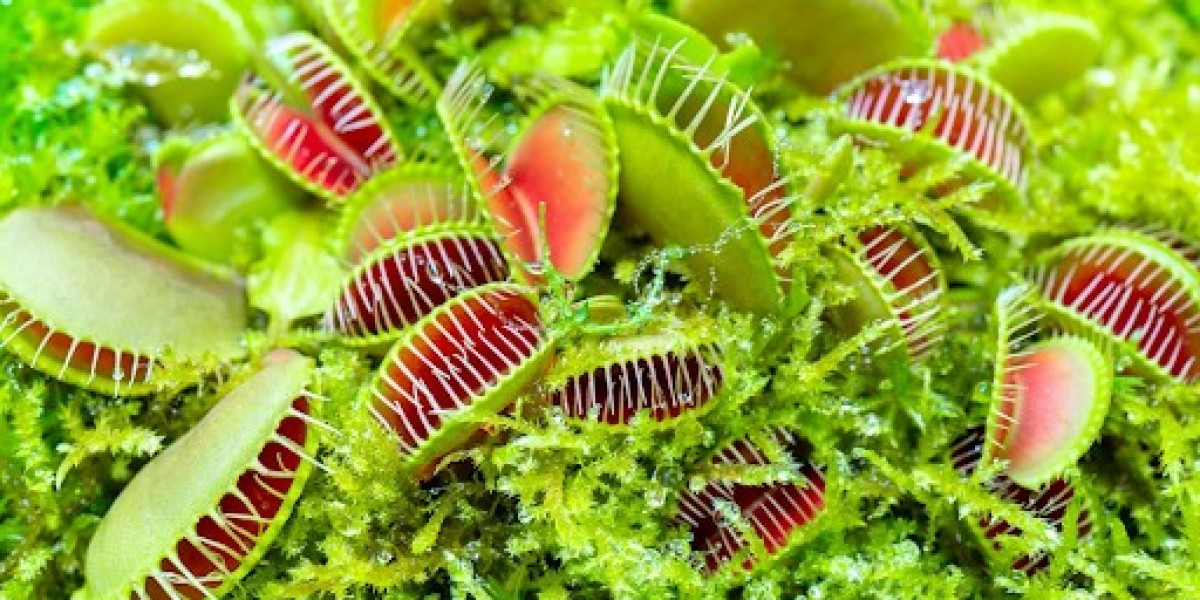Carnivorous plants have always fascinated nature enthusiasts and collectors alike. While the Venus Fly Trap is undoubtedly one of the most famous carnivorous plants, a world of lesser-known species is waiting to be discovered. In this blog, we'll take you on a journey beyond the Venus Fly Trap, exploring various carnivorous plant varieties that are equally intriguing and unique. Whether you're an avid collector or a curious beginner, these extraordinary plants are sure to captivate your imagination.
Diving into the Pitcher Plants:
Our journey into the world of carnivorous plants begins with the incredible Pitcher Plants. These plants are well-known for their distinctive pitcher-shaped leaves, which act as deadly traps for unsuspecting insects. Some of the most popular pitcher plant species include the Nepenthes and Sarracenia.
Nepenthes:
Also known as Tropical Pitcher Plants, Nepenthes are native to Southeast Asia and are renowned for their dazzling array of colours and sizes. They lure insects with sweet nectar and intoxicating scents before trapping them in their slippery pitchers. Nepenthes make for a spectacular addition to any carnivorous plant collection and are readily available from specialised nurseries or plants online in Australia.
Sarracenia:
Native to North America, Sarracenia species are often referred to as North American Pitcher Plants. These plants have a distinctive appearance, with trumpet-shaped leaves that feature intricate colour patterns and alluring nectar glands. Sarracenia varieties like Sarracenia purpurea and Sarracenia leucophylla are popular among carnivorous plant enthusiasts for their beauty and effectiveness in insect capture.
Exploring the Sundews:
Sundews, belonging to the Drosera genus, are another fascinating group of carnivorous plants that deserve attention. These plants get their name from the glistening, sticky droplets on their tentacle-like leaves that resemble morning dew.
Drosera Capensis:
One of the most widely cultivated Sundew species, Drosera Capensis, hails from South Africa. Its crimson tentacles exude a sticky substance that ensnares passing insects. Drosera Capensis is an excellent choice for beginners due to its ease of care and striking appearance. You can find this captivating carnivorous plant through reputable sellers offering plants online in Australia.
Unveiling the Butterworts:
Butterworts, or Pinguicula, are carnivorous plants with a more inconspicuous appearance compared to their pitcher plant or Venus Fly Trap counterparts. They are known for their delicate, succulent-like leaves that secrete a sticky substance to capture tiny insects.
Pinguicula Grandiflora:
Native to Europe and parts of North America, Pinguicula Grandiflora boasts charming purple flowers and sticky leaves that make it a beautiful addition to any carnivorous plant collection. These plants are relatively low-maintenance and thrive in well-drained soil, making them a perfect choice for indoor or outdoor gardening enthusiasts.
The Enigmatic Cobra Plant:
The Cobra Plant, scientifically known as Darlingtonia Californica, is a carnivorous plant native to the wetlands of Northern California and Oregon. Its striking appearance with upright, hooded leaves and intricate patterns is reminiscent of a cobra poised to strike.
Darlingtonia Californica:
Cultivating the Cobra Plant can be a rewarding experience for advanced carnivorous plant enthusiasts. To thrive, these plants require specific growing conditions, such as cool temperatures and pure water. Due to their specialised care needs, it's essential to obtain reliable care instructions from trusted sources or specialised sellers offering plants online in Australia.
Conclusion:
As we've ventured beyond the realm of Venus Fly Traps, we've discovered a diverse and captivating world of carnivorous plants. Each variety offers unique charm and appeal, from the alluring Pitcher Plants to the enchanting Sundews and the inconspicuous Butterworts to the enigmatic Cobra Plant.
Whether you're a seasoned collector or a newcomer to the world of carnivorous plants, exploring these lesser-known varieties can be an exciting and rewarding experience. To begin your journey, consider sourcing these remarkable plants from reputable nurseries or searching for plants online in Australia.



